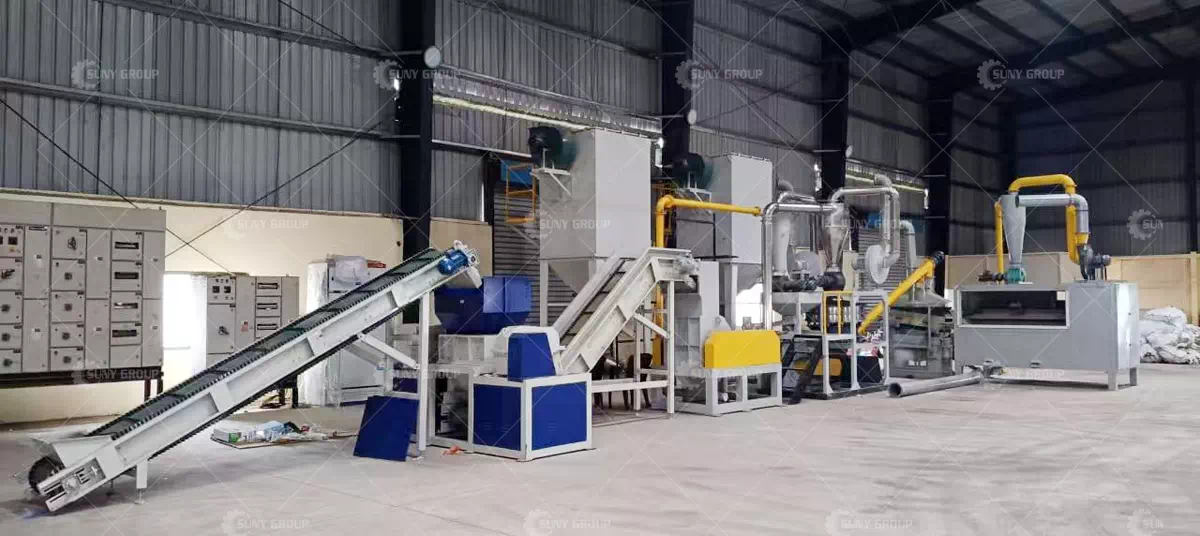
Indian Customer’s E-waste Recycling Production Line Site


Indian Customer’s E-waste Recycling Production Line Site
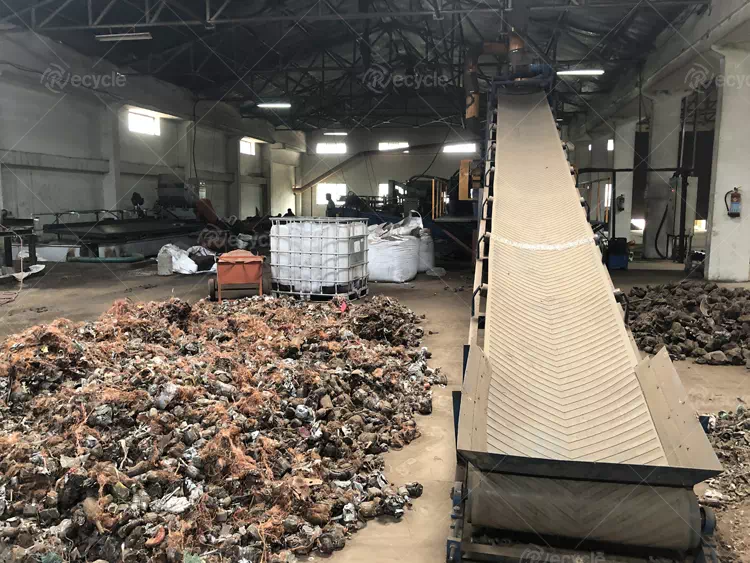
Scrap motor crushing sorting and recycling machines play a vital role in the disposal of scrap motors and resource recovery. These machines combine crushing, sorting, and recycling features to help companies efficiently dispose of scrap motors and recover valuable materials. Let’s delve into the key features and roles of these machines:
Crushing function: scrap motor crushing sorting and recycling machines can effectively crush scrap motors and break down the materials inside the motor into smaller particles, laying the foundation for subsequent processing and recycling.

Shreadder Machines and Motor Dismanteling Machines
Sorting function: these machines can sort the crushed materials and separate valuable metals such as copper wires and other materials from the waste materials, creating conditions for resource recycling.
Recycling function: By crushing, sorting, and recycling waste motors, these machines can effectively recover metals, plastics, and other valuable materials, promoting resource reuse and recycling.
Environmental significance: the use of waste motor crushing, sorting, and recycling machines helps to reduce the pollution of waste motors to the environment and promote the sustainable use of resources, in line with the concept of environmental protection and sustainable development.
Application areas:
Waste motor processing plant: these machines play a key role in waste motor processing plants, helping companies to efficiently process large quantities of waste motors and realize resource recovery.
Metal Recycling Plants: Scrap motors contain a lot of valuable metals, these machines can help metal recycling plants to effectively recycle the metal resources in scrap motors.
The scrap motor crushing, sorting, and recycling machine has an important role in the field of scrap motor processing and resource recycling, which provides effective technical support for enterprises to realize resource reuse, environmental protection, and sustainable development. Its crushing, sorting, and recycling functions transform the scrap motor into valuable resources, promoting the development of a circular economy and resource utilization efficiency.
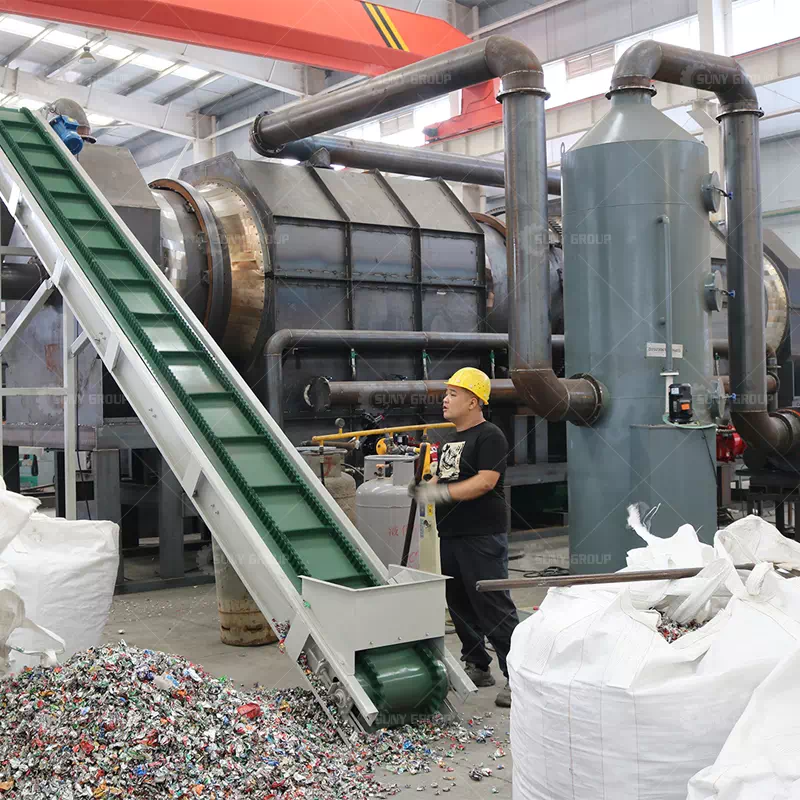
In the waste recycling industry, Continuous Charcoal Oven Paint Removal Equipment is a key machine that is specifically designed to separate paint from aluminum cans. This equipment plays a vital role in the processing of used aluminum cans, helping recycling plants to efficiently remove paint from the surface of aluminum cans, thus making the aluminum material easier to recycle.
1. Equipment Principle
The Continuous Charcoal Oven Paint Removal Equipment completely removes paint from the surface of aluminum cans by means of high-temperature charring. This equipment operates in a continuous mode and through a unique heating and treatment process, the paint on the surface of aluminum cans is carbonized into a form that can be easily separated.

Machine That Separates Paint from Aluminum Cans
2. Workflow
The equipment will feed the used aluminum cans into the charring furnace and undergo a high-temperature charring process, which causes the paint to decompose into gas and ash at high temperatures and separate from the aluminum cans. Subsequently, the separated aluminum cans can be further processed for recycling.
3. Advantages and features
High efficiency: Continuous operation improves the processing efficiency, allowing a large number of aluminum cans to be quickly removed from the paint.
Environmentally friendly: the gas and ash produced during the carbonization process can be effectively disposed of, reducing the negative impact on the environment.
Energy-saving: The use of advanced heating technology reduces energy consumption and improves the energy-saving performance of the equipment.
4. Field of application
This continuous carbonization furnace paint removal equipment is widely used in the recycling industry of used aluminum cans, which helps recycling factories process a large number of used aluminum cans efficiently and provides reliable raw materials for the production of recycled aluminum materials.
Continuous Carbonization Oven Paint Removal Equipment plays an important role in the recycling industry of used aluminum cans and provides reliable support for the production of recycled aluminum materials by efficiently removing the paint on the surface of aluminum cans. The application of this equipment not only improves the recycling efficiency but also helps to reduce environmental pollution and promote the sustainable use of resources.
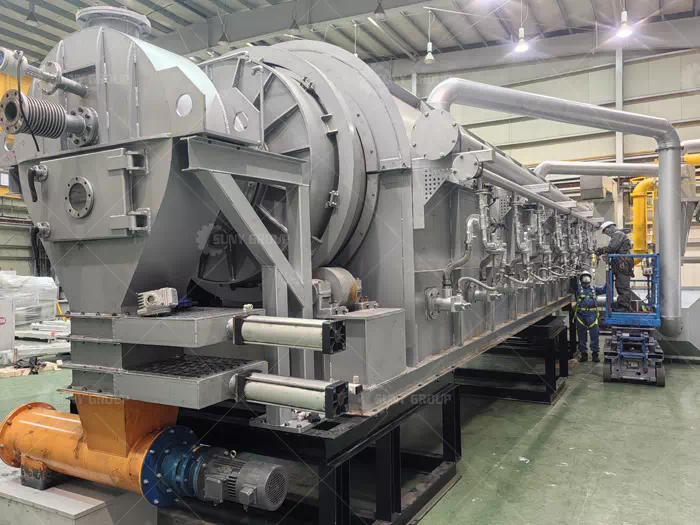
In today’s society, the demand for lithium-ion batteries is increasing with the popularization of electric vehicles, portable devices, etc., and the ensuing problem is the disposal and recycling of used lithium-ion batteries. The Lithium-ion Cell Recycling Production Line was created to solve this problem effectively.
Lithium-ion Cell Recycling Production Line is a production line specialized in the treatment and recycling of used lithium-ion batteries. It uses advanced technology and equipment to efficiently break down used batteries, extract valuable materials, and reuse them. This not only helps to reduce dependence on natural resources but also effectively reduces the environmental pollution caused by used batteries.

Lithium-ion Cell Recycling Production Line
In the Lithium-ion Cell Recycling Production Line, used batteries are first sent to the decomposition area, where they undergo a series of physical and chemical treatments to separate the battery shell from the internal materials. Subsequently, valuable metal elements, such as lithium, nickel, and cobalt, can be extracted through melting and dissolving methods and used to produce new batteries or other products.
In addition to the recycling of metal elements, the Lithium-ion Cell Recycling Production Line also focuses on the environmental protection treatment of batteries. Through reasonable waste water treatment, exhaust gas treatment and other measures to minimize the impact on the environment, to ensure that the production process meets environmental standards.
Overall, the Lithium-ion Cell Recycling Production Line plays a crucial role in treating used lithium-ion batteries. It not only helps to recycle resources but also helps to protect the environment and promote green development. It is believed that with the continuous advancement of technology, Lithium-ion Cell Recycling Production Lines will play an even more important role in the future, creating a cleaner and more sustainable production and living environment for human beings.
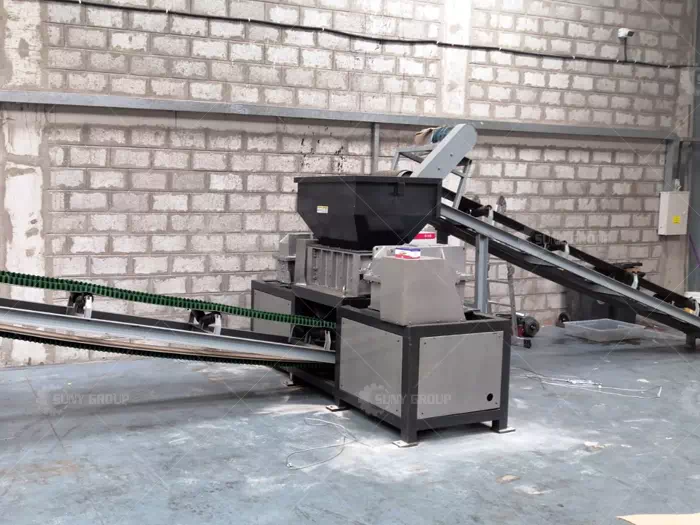

Customer Shredder Site in UAE
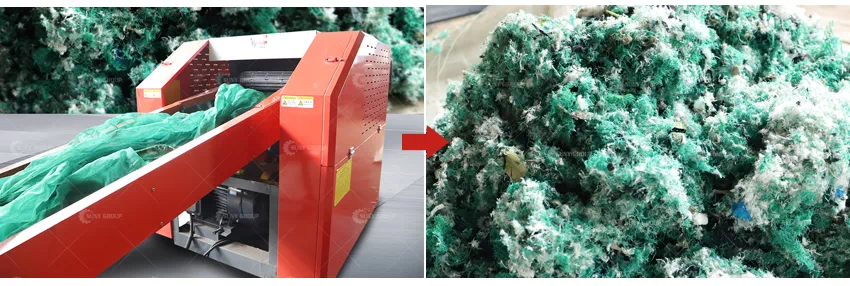
Fishing nets, which are mainly made of materials such as nylon, polyethylene, or polypropylene, are durable and prevent environmental degradation. Recycling discarded fishing nets not only helps to minimize the impact on the environment but also provides an opportunity to recycle valuable raw materials.
A fishing net shredder is a specialized machine designed to shred large, bulky fishing nets into small, manageable pieces. The initial shredding process is vital for efficient recycling, as it prepares the material for further processing (e.g. melting, pelletizing, or reuse in new products).
How it works
Loading the nets: The recycling process begins by feeding the waste nets into the shredder’s hopper. Depending on the size of the nets, some shredders may need to pre-cut the nets into smaller pieces to fit the machine.
Cutting and Shredding: Once the net enters the shredder, rotating blades or knives begin to cut the material into smaller pieces. These blades are designed to handle tough, fibrous materials such as nylon, ensuring that even heavily tangled nets are effectively shredded.
Output: After shredding, fishing nets are cut into smaller pieces or strips that are easier to transport and process. These pieces can then be melted down and converted into pellets for use in the manufacture of a variety of products.
The shredding process ensures that large fishing nets that would otherwise be difficult to transport or recycle become manageable for the next stage of recycling.
Advanced technology for fishing net shredders
Modern fishing net shredders have come a long way with the incorporation of innovative technology. Some of these latest features include
High durability: Cutting blades are often made of high-grade steel to withstand the tough, fibrous nature of fishing nets.
Automation: Many shredders are equipped with automatic feeding systems and sensors that adjust the shredding speed to the load, ensuring smooth and efficient operation.
Energy Efficiency: Newer models of shredders prioritize energy efficiency and reduce the environmental impact of the recycling process itself.
Dust and Fiber Control: Some shredders are designed with filters or systems that minimize the release of fine particles or fibers during the shredding process, helping to maintain a clean and safe working environment.
The fishing net shredder developed by SUNY GROUP will play a vital role in eliminating marine pollution and supporting the circular economy. Through continued investment and collaboration, the recycling of discarded fishing nets can significantly reduce their environmental impact and create new opportunities for resource recovery.
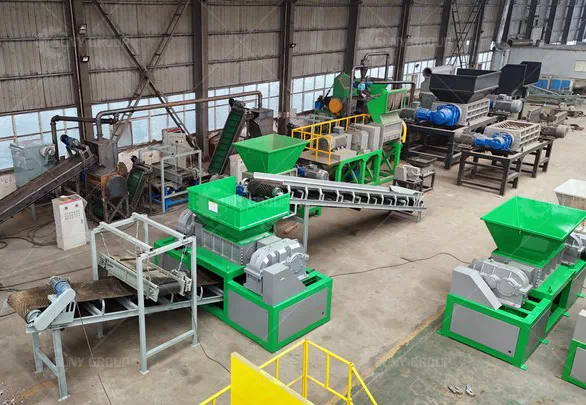
Pulverizers have a wide range of applications in industrial production, especially in the field of metal recycling and processing. Pulverizers for shredding aluminum flakes can not only increase the reuse rate of materials, but also significantly reduce production costs. In this article, we will discuss in detail the working principle, application scenarios and future development direction of this type of pulverizer.
Principle of operation
Aluminum pulverizers use a highly efficient blade system to cut aluminum flakes into small pieces through high-speed rotation and shearing. These machines usually have multiple blades and powerful motors to ensure that they can handle aluminum flakes of various thicknesses and sizes. The crushed aluminum flakes have smaller particles for subsequent transportation and reprocessing.
This type of pulverizer is widely used in places such as scrap metal recycling stations, manufacturing plants and processing plants. By pulverizing the discarded aluminum flakes, companies not only recycle valuable metals, but also reduce the environmental pollution caused by the waste materials. In addition, shredders that cut up aluminum flakes can also play an important role in helping to recycle resources in areas such as automotive manufacturing, aerospace and electronics.
Technical Advantages
Efficient cutting: the shredder uses high-quality blades with high cutting efficiency, capable of handling large quantities of aluminum flakes.
Low Energy Consumption: The advanced motor system ensures that the equipment operates efficiently while maintaining low energy consumption.
Automated operation: modern pulverizer is equipped with automated control system, which is easy to operate, safe and reliable.
With the continuous progress of science and technology, the crusher is also developing in the direction of intelligence and high efficiency. In the future, pulverizers for shredding aluminum flakes will further integrate artificial intelligence and IoT technologies to achieve remote monitoring and automatic fault diagnosis, improving the reliability and productivity of the equipment. In addition, environmentally friendly materials and sustainable design will also become an important trend in the development of crushers, helping enterprises to realize green production and sustainable development.